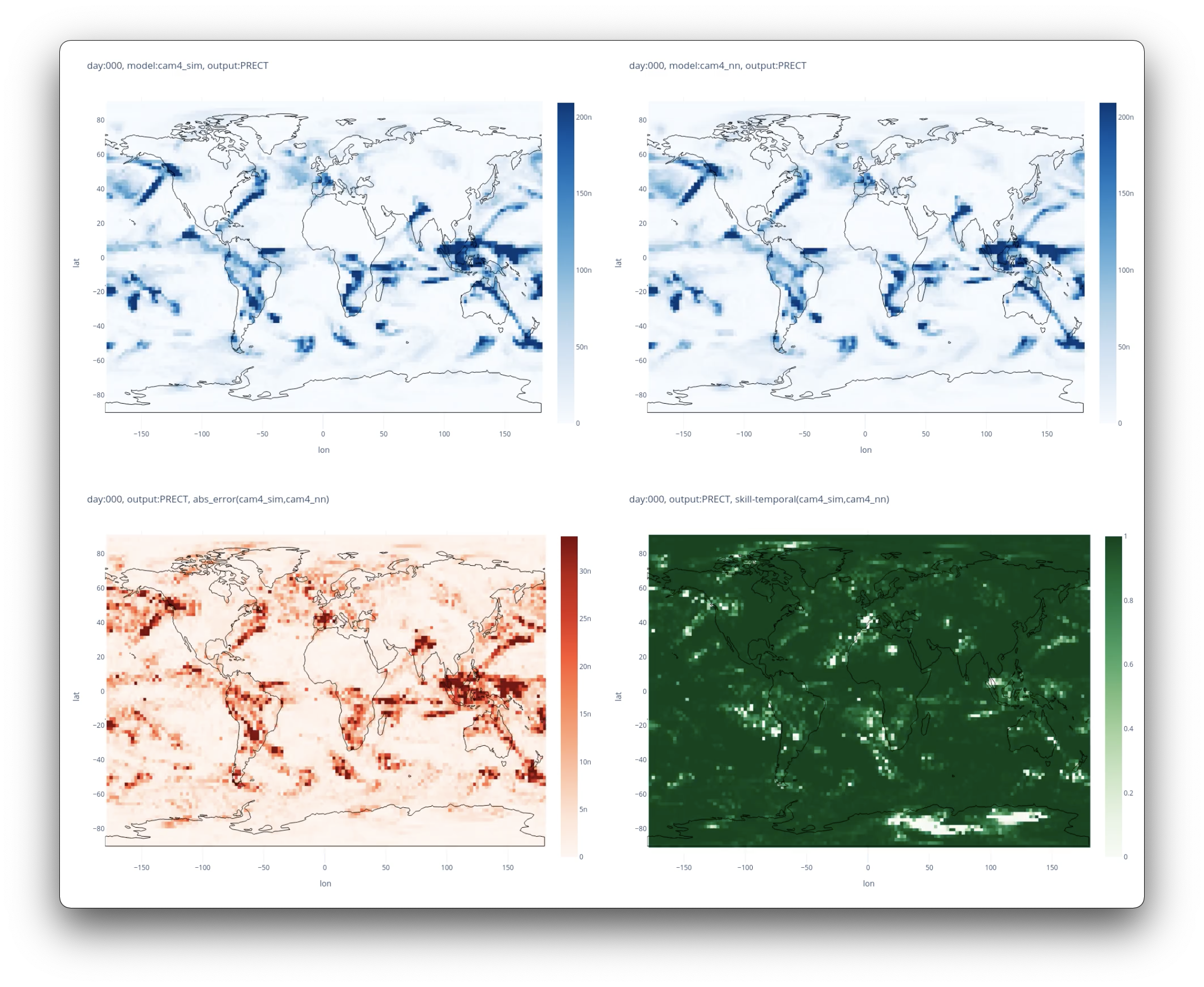Global AI Accelerator - GAIA
Welcome to GAIA Team Project Page, a DARPA AIE ACTM project.
Code repository and documentation for:
- training NN surrogates: https://github.com/stresearch/gaia
- deploying NN surrogates in GCM (still private, will be made public soon): https://github.com/stresearch/gaia-deploy
Project Description
Team


- STR
- Jim Gimlett
- Gregory Bushey
- Kirill Trapeznikov
- Eric Jones
- University of New South Wales, Sydney
- Steven Sherwood
- Abhnil Prasad
- David Fuchs
Sections
- Datasets - description of datasets used in surrogate training
- Surrogate Details and Hyperparameter Sweeps - neural network architecture and hyperparameter comparison
- Comparison of Surrogates Trained on Different Datasets - compare surrogates to CAM4, SPCAM simulations and compare CAM4 and SPCAM4 trained surrogates to each other
- Baseline Input Ablation - ablation of input variables and their effect on model performance
- Surrogate with Memory Inputs - improving surrogate performance by adding memory i.e. outputs from previous timestep
- Integration of AI Surrogate into GCM - deploying GAIA ML model in the GCM
- MJO Analysis - analysis of MJO in the datasets
- Surrogate Bottleneck Analysis - analysis of bottleneck dimension of the surrogate model
- Linearization - analysis linearization of surrogate models to understand sensitivity to inputs
- Surrogate Architectures - comparison of different neural network architectures and configurations
- Fine Tuning - comparison of fine-tuning an CAM4 trained model on SPCAM vs a model traiend from scratch
- Integration Journal - details on integration including training setup, diagnostic plots, etc.
Overview
Animation of CAM4 Simulation and Neural Network Surrogate Model

Concept & Approach
- Develop new hybrid AI tools and methods to accelerate ultra-high-resolution Global Climate Models (GCMs) models, substituting AI local surrogates to improve cloud-resolving physics
- Test climate “tipping point” hypotheses, with focus on the Madden Julian Oscillation (MJO)

What’s hard?
- GCMs are computationally expensive and lack the resolution needed to adequately model local convection and thus clouds
- This greatly increases GCM forecast errors and impedes propagation of large-scale wave phenomena such as the MJO
What will GAIA accomplish?
- Enable a GCM to accurately model local convection and predict self-organizing atmospheric wave phenomena
- Exploit this GCM to explore possible future regimes and identify early warning signatures for MJO-related tipping points.
Progress
- Developed and validated high-skill AI surrogates for multiple GCM local models, including CAM4, SPCAM with Morrison micro-physics, SPCAM with CLUBB cloud parameterization
- Currently studying impact of added memory and ablating inputs
- Next Steps:
- Determine input regimes where CAM/SPCAM underperform
- Analyze GCM sensitivity using lower order dynamical model
- Apply results to selectively enhance local surrogate using ultra-high-resolution local eddy simulation for training.
- Integrate surrogate into GCM; use GCM to test MJO hypotheses